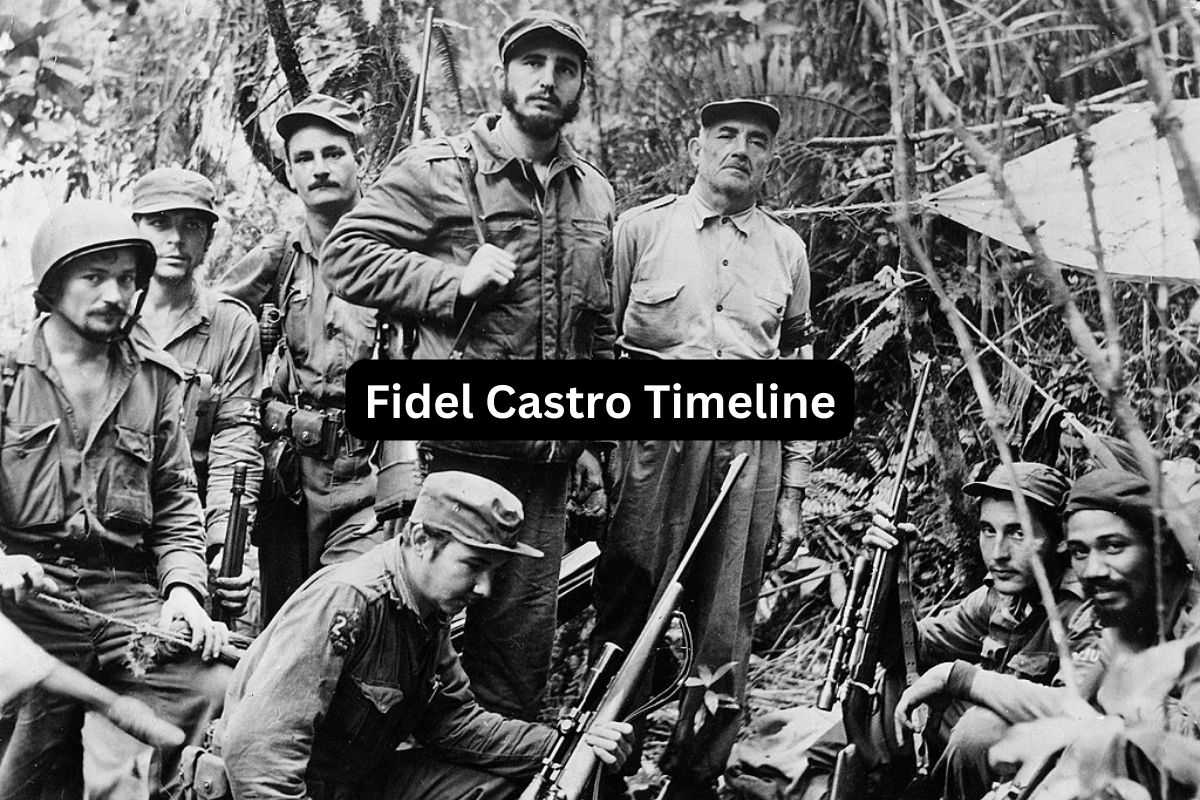Fidel Castro, the revolutionary leader of Cuba, has left an enduring mark on the nation’s history.
This article delves into Castro’s complex legacy, covering key events such as the failed Moncada Barracks attack, the overthrow of Fulgencio Batista’s regime, and the Bay of Pigs invasion.
We’ll also examine Castro’s socialist policies’ impact on Cuba’s economy and society, alongside the controversies surrounding his rule. Join us as we explore the lasting significance of Fidel Castro in Cuban history.
| Year | Event |
|---|---|
| 1926 | Fidel Alejandro Castro Ruz is born in Birán, Cuba. |
| 1945 | Castro enters the University of Havana to study law. |
| 1953 | July 26th: Castro leads an unsuccessful attack on the Moncada Barracks. |
| 1955 | Castro is released from prison and goes into exile in Mexico. |
| 1956 | Castro sails from Mexico to Cuba aboard the yacht Granma. |
| 1959 | January 1st: Castro’s forces seize control of Havana. |
| 1961 | April: The Bay of Pigs invasion fails. |
| 1962 | The Cuban Missile Crisis occurs. |
| 1976 | Cuba adopts a new socialist constitution. |
| 1980 | The Mariel boatlift takes place. |
| 1991 | The collapse of the Soviet Union impacts Cuba’s economy. |
| 2006 | Fidel Castro undergoes emergency surgery and cedes power to his brother. |
| 2016 | Fidel Castro dies on November 25th at the age of 90. |
Timeline of Fidel Castro
1926: Fidel Alejandro Castro Ruz is born in Birán, Cuba
Fidel Alejandro Castro Ruz is born on August 13th in Birán, a small town in the Oriente Province of Cuba. He was born to Ángel Castro y Argiz, a Spanish immigrant who became a prosperous sugarcane farmer, and Lina Ruz González, his maid who later became his father’s wife.
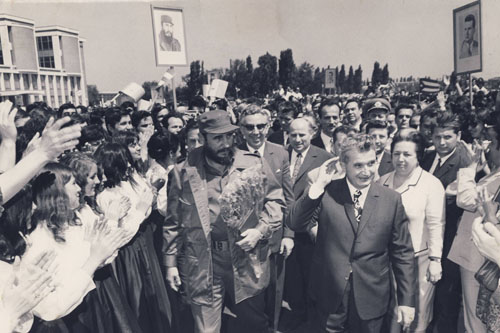
1945: Castro enters the University of Havana to study law
Castro begins his higher education journey by enrolling at the University of Havana to study law. During his time at the university, Castro becomes increasingly involved in student politics, expressing his discontent with the corrupt regime of Cuban dictator Fulgencio Batista. His experiences in university politics sow the seeds of his future revolutionary activities.
1953: July 26th: Castro leads an unsuccessful attack on the Moncada Barracks
On July 26th, Castro leads an audacious attack on the Moncada Barracks in Santiago de Cuba, along with around 120 rebels. The assault, aimed at sparking a popular uprising against Batista’s regime, ultimately fails.
Also Read: Fidel Castro Accomplishments
Castro and many of his comrades are arrested, while others are killed in the battle or executed afterwards. This event, despite its failure, marks the beginning of the Cuban Revolution and propels Castro into the spotlight as a symbol of resistance against Batista’s dictatorship.
1955: Castro is released from prison and goes into exile in Mexico
After spending nearly two years in prison following the failed Moncada Barracks attack, Fidel Castro is released as part of a political amnesty.
Also Read: Bay of Pigs Facts
He goes into exile in Mexico, where he begins to regroup and organize for another attempt to overthrow Batista’s regime. It’s during this period that Castro meets and forms crucial alliances with fellow revolutionary figures, including Ernesto “Che” Guevara.
1956: Castro sails from Mexico to Cuba aboard the yacht Granma
In December, Castro, along with Che Guevara and a small group of revolutionaries, embarks on a daring expedition from Mexico to Cuba aboard the yacht Granma. Their aim is to launch a guerrilla campaign against Batista’s forces.
However, upon landing in Cuba, they are immediately ambushed by Batista’s troops. Despite suffering heavy losses, including being reduced from 82 to 20 men, Castro and his surviving comrades retreat to the Sierra Maestra mountains to begin their guerrilla war.
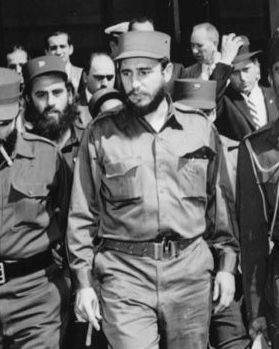
1959: January 1st: Castro’s forces seize control of Havana
The revolutionary forces led by Fidel Castro achieve a significant victory on January 1st, as Batista flees the country, leaving Havana vulnerable to Castro’s advancing forces. Castro’s guerrillas enter Havana triumphantly, effectively seizing control of the capital.
This marks the end of Batista’s regime and the beginning of Castro’s revolutionary government. Fidel Castro assumes the position of Prime Minister of Cuba, consolidating his power and embarking on a mission to reshape Cuban society along socialist lines.
1961: April: The Bay of Pigs invasion fails
In April, the Bay of Pigs invasion occurs. This invasion was a CIA-backed attempt to overthrow Fidel Castro’s government by landing Cuban exiles on the southern coast of Cuba.
The invasion fails miserably, as Cuban forces, aware of the impending attack, swiftly crush the invasion force. This event further solidifies Castro’s hold on power and strengthens his anti-imperialist rhetoric.
1962: The Cuban Missile Crisis occurs
The Cuban Missile Crisis unfolds in October, bringing the world to the brink of nuclear war. The crisis is sparked by the discovery of Soviet ballistic missiles in Cuba, capable of reaching the United States.
This revelation prompts a tense standoff between the United States and the Soviet Union, as President John F. Kennedy demands the removal of the missiles.
Through intense diplomatic negotiations, the crisis is eventually resolved, with the Soviets agreeing to remove the missiles in exchange for a promise from the United States not to invade Cuba and a secret agreement to remove American missiles from Turkey.
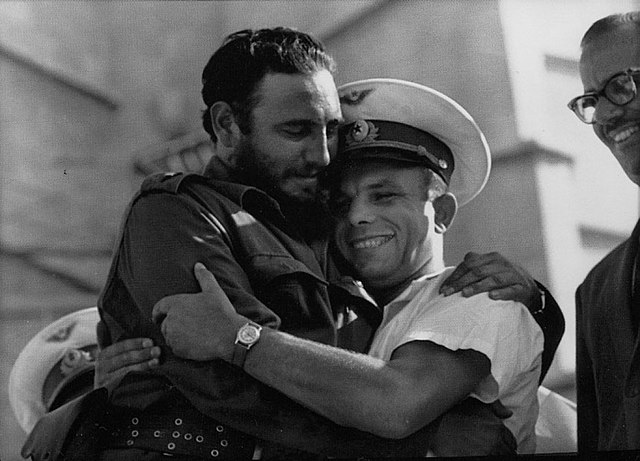
1976: Cuba adopts a new socialist constitution
Cuba adopts a new socialist constitution, which formally establishes the Communist Party as the leading force in the country’s political system. Fidel Castro is declared the leader of the Communist Party and the country, solidifying his position as the head of state.
1980: The Mariel boatlift takes place
The Mariel boatlift takes place, starting in April and lasting several months. This event sees a mass exodus of Cubans fleeing to the United States from the port of Mariel in Cuba. The boatlift is triggered by Castro’s decision to allow anyone who wants to leave the country to do so.
The exodus includes not only political dissidents but also criminals and individuals with mental health issues, leading to tensions between Cuba and the United States.
1991: The collapse of the Soviet Union impacts Cuba’s economy
The collapse of the Soviet Union has a profound impact on Cuba’s economy. For decades, Cuba had relied heavily on economic and military support from the Soviet Union. With the dissolution of the Soviet Union, Cuba loses its main trading partner and source of aid.
This event plunges Cuba into an economic crisis known as the “Special Period in Time of Peace.” The Special Period is characterized by severe shortages of food, fuel, and other basic necessities, leading to widespread hardship and deprivation for the Cuban people.
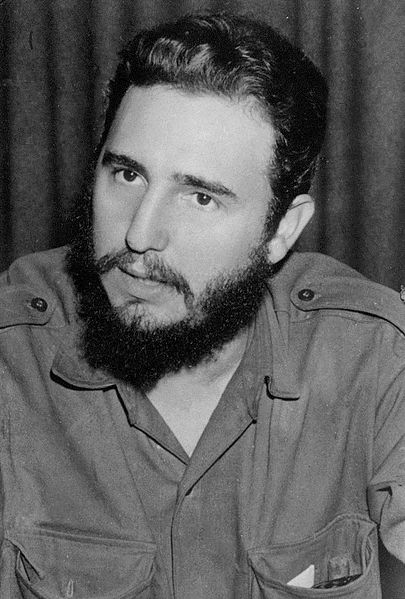
2006: Fidel Castro undergoes emergency surgery and cedes power to his brother
Fidel Castro undergoes emergency intestinal surgery in July, temporarily relinquishing power to his younger brother, Raúl Castro. Fidel’s health crisis sparks speculation about the future leadership of Cuba and prompts concerns about political stability on the island.
Although Fidel eventually recovers from surgery, his health remains fragile, and he gradually reduces his public appearances and official duties.
2016: Fidel Castro dies on November 25th at the age of 90
Fidel Castro dies on November 25th at the age of 90. His death marks the end of an era in Cuban history and elicits a range of reactions both within Cuba and around the world.
While some mourn Castro’s passing as the loss of a revolutionary icon who stood up to imperialism and championed social justice, others criticize his authoritarian rule and human rights abuses. Castro’s death also raises questions about the future direction of Cuba and the legacy of the Cuban Revolution.
